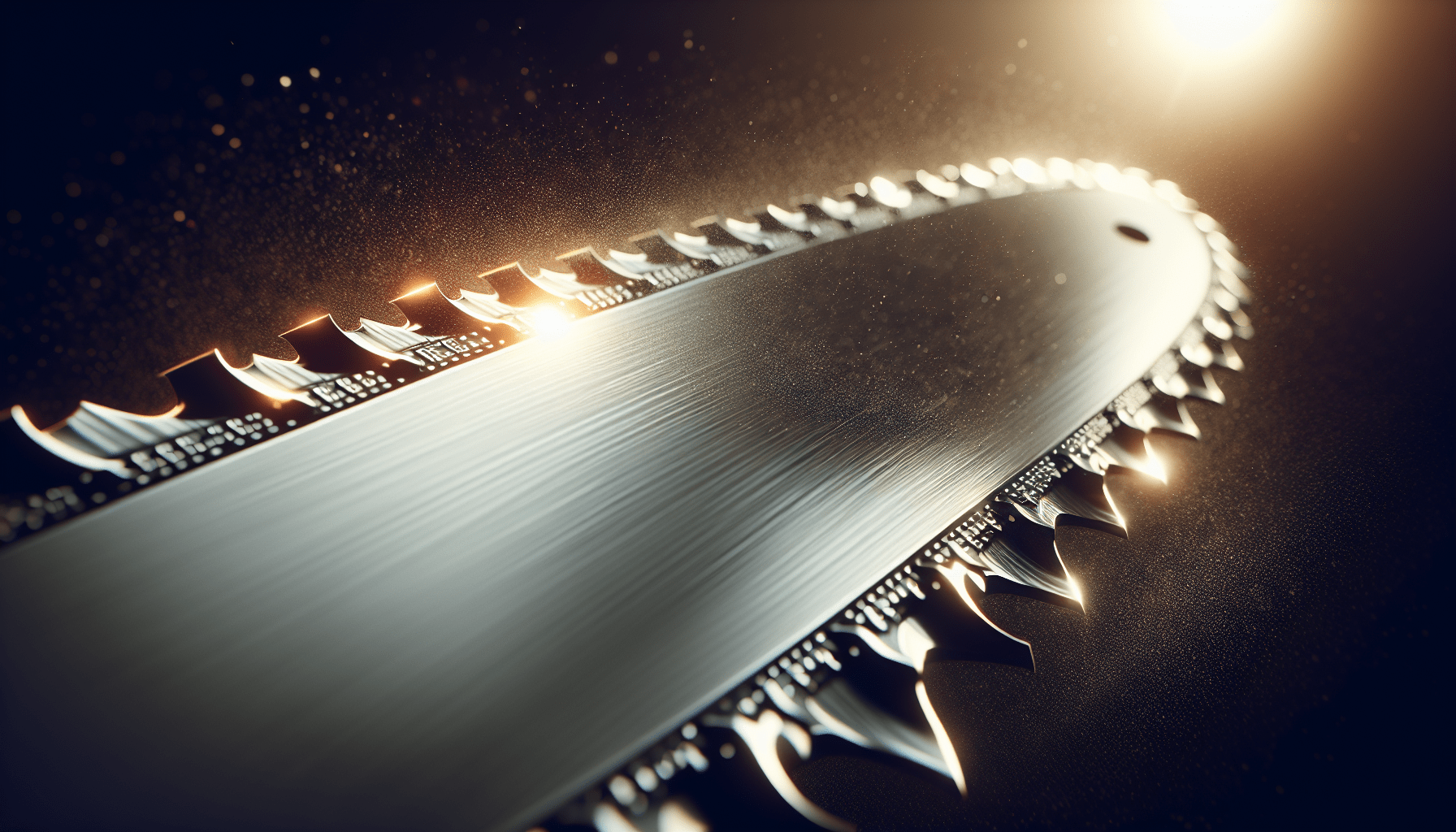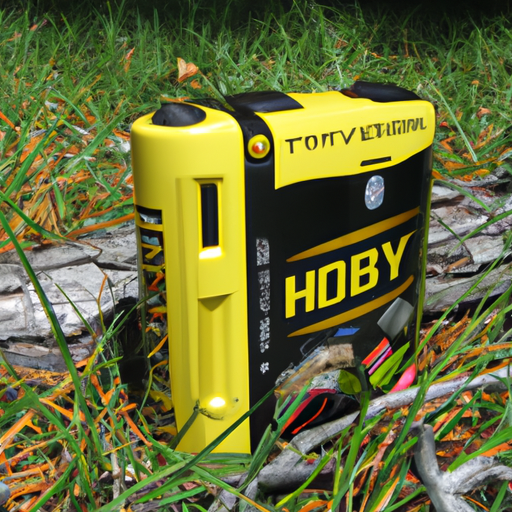When it comes to cutting trees, choosing the right saw can make all the difference. With an array of options available, it can be overwhelming to determine which saw is best suited for the job. This article will walk you through the various factors to consider and provide guidance on selecting the appropriate saw for cutting trees. From the size of the tree to the type of wood, we’ll help you make an informed decision that ensures a safer and more efficient tree-cutting experience. When it comes to cutting trees, having the right saw can make all the difference. With so many options available, it can be overwhelming to know which saw is best for your needs. That’s why we’re here to help! In this comprehensive article, we’ll guide you through the different types of saws available for tree cutting, discuss safety considerations, factors to consider when choosing a saw, information about specialty saws, and provide maintenance tips. So, let’s dive in and explore the world of saws!
Hand Saws
Hand saws are a popular choice for tree cutting due to their versatility and ease of use. There are several types of hand saws that are commonly used for this purpose, including pruning saws, folding saws, and bow saws.
Pruning Saw
A pruning saw is specifically designed for trimming and pruning trees and shrubs. It features a relatively narrow, curved blade with aggressive teeth, allowing for efficient cutting of branches. The curved blade helps guide the saw through the wood, reducing the risk of the saw getting stuck. Pruning saws are available with both straight and curved blades, offering options for different cutting needs.
Folding Saw
If you’re looking for a portable and compact option, a folding saw might be the perfect choice. As the name suggests, folding saws have a blade that can be folded into the handle, making them easy to carry and store. Despite their compact size, folding saws still offer impressive cutting power, making them suitable for various tree cutting tasks.
Bow Saw
Bow saws are known for their versatility and efficiency. They consist of a narrow, straight blade that is tensioned between two handles forming a bow shape. This design allows for both push and pull cutting, making it easier to tackle larger branches. Bow saws are especially useful for cutting through thicker limbs and logs, making them an excellent choice for more intensive tree cutting projects.
Chainsaws
Chainsaws are powerful tools that can make quick work of cutting trees. They have a rotating chain with sharp teeth, allowing for fast and efficient cutting. While chainsaws require more strength and technique to operate compared to hand saws, they are ideal for larger trees and heavy-duty cutting tasks. There are different types of chainsaws available, including gas-powered chainsaws, electric chainsaws, and battery-powered chainsaws.
Gas-powered Chainsaw
Gas-powered chainsaws are often the go-to choice for professionals or individuals dealing with large-scale tree cutting projects. They provide excellent cutting power and can handle heavy-duty tasks with ease. Gas-powered chainsaws are typically more powerful than electric or battery-powered models, making them suitable for felling large trees and cutting through thick logs.
Electric Chainsaw
For those working on smaller projects or looking for a more environmentally-friendly option, electric chainsaws are worth considering. Electric chainsaws are quieter, require less maintenance, and produce zero emissions compared to their gas-powered counterparts. They are generally lighter and easier to handle, making them a popular choice for homeowners and DIY enthusiasts.
Battery-powered Chainsaw
Battery-powered chainsaws combine the convenience of electric chainsaws with the portability of gas-powered chainsaws. They are cordless, allowing you to move freely without worrying about extension cords or finding a power source. Battery-powered chainsaws are generally less powerful than gas or electric models, but they still offer enough cutting power for most residential tree cutting needs. They are a great option for those who value mobility and ease of use.
Pole Saws
When it comes to cutting high branches or working in hard-to-reach areas, pole saws are a must-have tool. They consist of a saw blade attached to a long pole, allowing for safe and efficient tree trimming. There are three main types of pole saws: manual pole saws, electric pole saws, and gas-powered pole saws.
Manual Pole Saw
Manual pole saws are operated by hand and are an excellent option if you only have a few branches to trim. They are lightweight and easy to use, making them suitable for smaller pruning tasks and maintaining tree aesthetics.
Electric Pole Saw
Electric pole saws operate using electricity and are a popular choice for residential use. They are easy to start, relatively lightweight, and provide enough cutting power for average tree cutting needs. Electric pole saws are quiet and produce zero emissions, making them an eco-friendly option.
Gas-powered Pole Saw
Gas-powered pole saws offer the highest cutting power among the three types of pole saws. They are typically used for more heavy-duty tree cutting tasks, such as dealing with large branches or thicker limbs. Gas-powered pole saws are suitable for professional use or individuals working on extensive tree cutting projects.
Pruning Hand Saws
Pruning hand saws are specifically designed for trimming and shaping trees and shrubs. They are available in various types, including straight blade pruning saws, curved blade pruning saws, and folding pruning saws.
Straight Blade Pruning Saw
Straight blade pruning saws are a popular choice for general pruning tasks. They are versatile and easily cut through small to medium-sized branches. The straight blade allows for precise cuts and increased control while trimming.
Curved Blade Pruning Saw
Curved blade pruning saws are designed to cut branches in harder-to-reach areas. The curved shape of the blade allows for better maneuverability and accessibility when trimming near the tree trunk. Curved blade pruning saws are ideal for precision pruning and shaping, especially in areas with dense foliage.
Folding Pruning Saw
Folding pruning saws offer the convenience of portability. The folding mechanism allows the blade to be safely housed within the handle, reducing the risk of accidents during storage or transport. Folding pruning saws are lightweight and easy to carry, making them a great choice for pruning on the go.
Pruning Chainsaws
Pruning chainsaws are specifically designed for the unique needs of tree pruning. They offer the cutting power of chainsaws with features tailored for pruning tasks. There are different types of pruning chainsaws available, including gas-powered pruning chainsaws, electric pruning chainsaws, and battery-powered pruning chainsaws.
Gas-powered Pruning Chainsaw
Gas-powered pruning chainsaws are the most powerful option for pruning. They offer high cutting speed and cutting torque, allowing for efficient pruning of thick branches. Gas-powered pruning chainsaws are commonly used by professionals and individuals tackling large-scale pruning projects.
Electric Pruning Chainsaw
Electric pruning chainsaws combine the convenience of electric power with the pruning capabilities of a chainsaw. They are typically lighter and easier to handle than gas-powered models, making them suitable for residential pruning tasks. Electric pruning chainsaws are quiet, emit no fumes, and require minimal maintenance, making them an excellent choice for homeowners and DIY enthusiasts.
Battery-powered Pruning Chainsaw
Battery-powered pruning chainsaws are cordless, allowing for maximum mobility during pruning tasks. They offer decent cutting power and are suitable for small to medium-sized pruning projects. Battery-powered pruning chainsaws are quieter and more eco-friendly compared to gas-powered models. They are a convenient option for those who value portability and ease of use.
Safety Considerations
When using any type of saw, safety should be the top priority. Cutting trees can be hazardous, so it’s essential to take proper precautions to protect yourself and others. Here are some safety considerations to keep in mind:
Protective Gear
Wearing appropriate protective gear is vital when using saws. This includes safety goggles or glasses to protect your eyes from flying debris, ear protection to reduce noise exposure, gloves to provide a firm grip and protect your hands, and sturdy footwear to prevent injuries from falling objects or slips.
Proper Handling Techniques
Understanding how to handle a saw properly is essential for safe operation. Always maintain a firm grip on the handle and keep both hands on the saw during cutting. Follow the manufacturer’s instructions for starting, operating, and stopping the saw to avoid accidents.
Training and Certification
If you’re new to using saws or tackling larger tree cutting projects, consider seeking training and certification. Many organizations offer courses and certifications for safe saw operation. Learning the proper techniques and safety practices will help reduce the risk of accidents and ensure a successful tree cutting experience.
Factors to Consider
Choosing the right saw for tree cutting involves considering various factors. Here are some key factors to keep in mind:
Tree Size and Type
The size and type of trees you’ll be cutting influence the type of saw you should choose. Smaller trees and thin branches can be easily handled with hand saws or electric chainsaws. Gas-powered chainsaws or pole saws might be more suitable for larger trees, thicker branches, or logs.
Location
Consider the location where you’ll be cutting trees. If you have access to electricity and noise is not a concern, electric chainsaws or pole saws might be the best choice. Gas-powered chainsaws or pole saws are more suitable for remote locations or areas without easy access to electricity. Consider the environment and surroundings to ensure you choose the most appropriate saw for the location.
Frequency of Use
If you’ll be using the saw frequently, durability and ease of maintenance should be considered. Gas-powered chainsaws generally require more maintenance than electric or battery-powered models. Assess your needs and choose a saw that aligns with the frequency and intensity of your tree cutting tasks.
Specialty Saws
In addition to the main types of saws for tree cutting, there are also specialty saws available for specific purposes. Here are a few examples:
Gutter Cleaning Saw
Gutter cleaning saws are designed to remove debris and leaves from gutters. They feature a curved blade with small teeth that easily fit into the gutter channels, allowing for efficient cleaning without damaging the gutter material. Gutter cleaning saws are an excellent addition to your saw collection if you need to maintain clean and functional gutters.
Felling Saw
Felling saws are designed for felling or cutting down trees. They are typically longer and have larger, more aggressive teeth to handle large trees effectively. If you’re planning to tackle tree removal or large-scale felling, a felling saw is the right tool for the job.
Limbing Saw
Limbing saws are used for removing branches from fallen or cut trees. They have a curved blade with large teeth that easily cut through limbs. Limbing saws are efficient and allow for quick removal of branches, making them essential for cleanup after tree cutting.
Maintenance and Care
To ensure the longevity and performance of your saw, proper maintenance and care are crucial. Here are some tips to keep your saw in top condition:
Regular Cleaning
Cleaning your saw after each use helps prevent the buildup of sap, dirt, and debris, which can affect its performance. Use a brush to remove any residue from the blade, and wipe down the handle and other parts with a clean cloth. If the blade is particularly dirty, you can use a mild detergent and water to clean it. Just be sure to dry the saw thoroughly before storing it.
Sharpening the Blades
Maintaining sharp blades is essential for efficient cutting. Regularly inspect the blades for any dullness or damage. If needed, sharpen the blades using a file or take them to a professional for sharpening. A sharp blade not only makes cutting easier but also prevents accidents caused by excessive force or slipping.
Proper Storage
Store your saw in a clean, dry, and secure location. Avoid leaving it exposed to moisture, extreme temperatures, or direct sunlight, as these can cause rust and deterioration. Use a blade cover or sheath to protect the blade from damage and ensure safety during storage and transport.
Choosing the Right Saw
Choosing the right saw ultimately comes down to assessing your needs and considering safety precautions. Here’s a step-by-step guide to help you make an informed decision:
Assess Your Needs
Consider the size of the trees you’ll be cutting and the intensity of the projects. Assess the frequency of use and the location where you’ll be operating the saw. By understanding your specific needs, you can narrow down the options and find the most suitable saw for your requirements.
Consider Safety Precautions
Safety should always be a priority when working with saws. Consider your level of experience and expertise in handling saws. Evaluate the safety features and requirements of each type of saw. Electric and battery-powered saws are generally safer and easier to handle for beginners, while gas-powered saws require more skill and experience.
Seek Professional Advice if Necessary
If you’re uncertain about which saw to choose or have specific requirements, consider seeking professional advice. Consulting with arborists or experienced tree-cutting professionals can provide valuable insights and guidance based on their expertise. They can recommend the best saw for your needs and help ensure a safe and successful tree cutting experience.
In conclusion, choosing the right saw for cutting trees is essential for efficient, safe, and successful tree cutting projects. Hand saws, chainsaws, and pole saws offer different options depending on the scale of the project and personal preferences. Consider factors such as tree size, location, and frequency of use when selecting a saw. Don’t forget to prioritize safety and proper maintenance to ensure long-term functionality and longevity of your saw. By following these guidelines and seeking professional advice if needed, you can confidently select the right saw for your tree cutting needs. Happy cutting!



